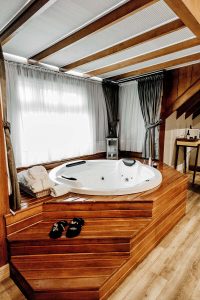 Generally speaking, a hot tub was designed to be operated using a GFCI, hard-wired 220 to 240 circuit. However, there are some exceptions, such as if the hot tub is equipped with multiple pumps, controls, heaters, and more, like in the case of a dual temperature hot tub.
Generally speaking, a hot tub was designed to be operated using a GFCI, hard-wired 220 to 240 circuit. However, there are some exceptions, such as if the hot tub is equipped with multiple pumps, controls, heaters, and more, like in the case of a dual temperature hot tub.
When it comes to repairs, electricians will know how to repair hot tub and spa electrical components. It is your responsibility to make sure that any electrician that will repair electrical for hot tub and spa at your home will be licensed and a part of the National Electrical Code as well as any local and state codes that are enforced at that time. Also, it is very important before you repair hot tub and spa electrical that you refer to your owner’s manual for your exact type and model to get the specific electrical requirements that will be needed to repair electrical for hot tub and spas.
Most North American hot tubs devices were manufactured for operation at 60 Hz. Only AC, 220-240 volts are required. It is important to ensure that no energy is supplied during the electrical installation of the spa. The scope of delivery of the electrical equipment includes a copper terminal lug, which allows connection to local earthing points.
The ground wire must be at least 6 AWG and firmly connected to a grounded metal structure. Your spa’s only power supply must have a 50-60 AMP switch or circuit breaker to open all ungrounded leads as per Section 422-20 of the National Electrical Code. The circuit breaker, which is usually housed in a small metal box, must be easily accessible to the occupants of the spa but must be installed at least half a meter from the spa.
The recommended cable size is 6 AWG copper. Route the 4 wires to the device area to make the final connection to the terminals in the control panel (wiring). The spa must be connected to a dedicated 220-240-volt, 50-60 amp, and earth leakage circuit breaker. The term “dedicated” means that the circuit of the spa is not used for other electrical elements (outdoor lighting, appliances, etc). If the spa is connected to a non-dedicated circuit, the overload will cause a nuisance trip that may require a reset of the switch on the home control panel and may present a safety hazard.
Plug n Play Spas
There are also many “plug-n-play” hot tubs working on a standard 15-20-amp house circuit. Most have an integrated earth leakage circuit breaker at the end of the cable and are plugged directly into the outlet. Due to the constant electrical demand in this circuit, it is important to have your own line and circuit even with a plug-n-play spa. Therefore, it cannot be shared with another outlet and cannot take the extra load of things such as televisions, appliances, etc., as it can overload the circuit and cause troublesome tripping hazards and potential safety hazards. Again, consult a licensed electrician for a qualified assessment.
This may seem like an overwhelming process to get your hot tub or spa set up. That’s where we come in! Contact Professional Electric for a consultation on your needs!